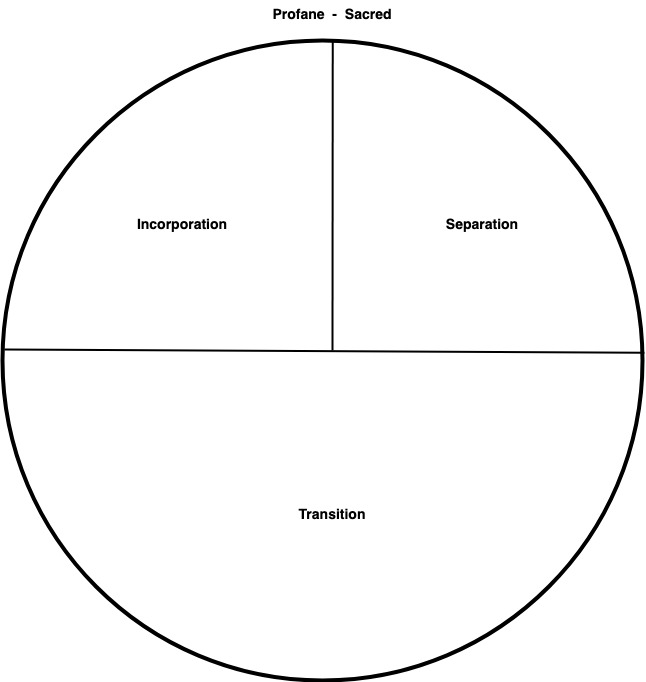For the next post in this series we’re going to tackle a film that is perhaps better known for what it inspired. George Lucas cited The Hidden Fortress as a major influence on Star Wars. The lightsabres are, of course, samurai swords and so that influence is clear. Darth Vader’s helmet and the helmets of the imperial soldiers look an awful lot like the helmets the samurai used to wear, so that’s a second inspiration. The third, and perhaps most important, is the character of the noble princess battling for what is right. She is Princess Leia in Star Wars. In Kurosawa’s movie, she is Princess Yuki.

From an archetypal point of view, there is another major correspondence between the two films. Both Star Wars (the first three movies) and The Hidden Fortress are what I call Orphan Stories. They are stories featuring a hero who goes through the archetypal progression from the Orphan to the Adult. In the broadest terms, we cease to be Orphans and become Adults when we find a place in society and establish ourselves in four main areas. There is our economic identity, our political identity, our religious identity and our sexual identity. All four of these are brought together in marriage and so marriage is a useful shorthand for the transition to adulthood.
There is, however, another form of Orphan journey involving membership of the “elite” of society. In these cases, the individual will attain the highest roles available. For economic and political identity, this is the archetype of Ruler (King and Queen). The highest religious identity is the Sage (Pope, other religious elites). Is there a sexual elite? Well, many societies have had something like that. The ancient world had what is called sacred prostitution. The geishas of Japan might be another example. Arguably, the Hollywood actors of our time fulfil a similar function.
Stories about elites are usually more dramatic since they involve not just a personal but a societal element. That’s why there’s so many movies about kings, queens, wizards and warriors. Both Star Wars and The Hidden Fortress are Orphan Stories featuring characters who are destined to become the elite of their society. But here we see an important difference. George Lucas made Princess Leia not the main character of his movie. Rather, Star Wars is the Orphan Story of Luke Skywalker. The Hidden Fortress, on the other hand, is the Orphan Story of Princess Yuki. I’ve been writing a lot about Orphan Stories over the last couple of years and I think The Hidden Fortress is the first one I’ve written about which features a female protagonist.
The Hidden Fortress is sometimes considered one of Kurosawa’s more lightweight movies. I find that very strange because it is both an Orphan Story and a political treatise masquerading as an action/adventure movie. The political aspects of the story are worth a post in themselves and we’ll be looking at those next week. In this post, we’ll analyse the film as the Orphan Story of princess Yuki.
There’s a technical aspect of storytelling that we need to introduce at this point. Almost all blockbuster films and best-selling novels have what is called a B-story. As the name suggests, the B-story is a second, relatively independent story within the main story. Usually, it will feature a character who is not the hero.

The B-story is introduced about a quarter of the way into the story after the main themes of the hero’s story are made clear. The B-Story is technically a Hero’s Journey that runs in parallel with the main Hero’s Journey but is related to it in some way. The B-story almost always provide a twist at the end of the main story when its plotline intersects with the main. In the first Star Wars film, Hans Solo’s debt obligations to Jabba the Hutt form the B-Story to the main story.
In The Hidden Fortress, it is Princess Yuki’s need to become a queen which technically forms the B-story of the film. That B-story is an Orphan Story because it is about the journey princess Yuki must take to attain adulthood both in the societal sense but, more importantly, in the personal, psychological sense.
Kurosawa actually pulls a brilliant trick here because he makes the B-story the psychological counterpart to the main story. The main story is about the great general, Makabe Rokurota. Rokurota and Princess Yuki are members of the Akizuki clan which finds itself in dire straits about to be wiped off the map by the Yamana clan. Rokurota must transport the princess across enemy territory to reach a third country which is an ally from where the princess can rebuild the Akizuki to its former glory. The hidden fortress is where the princess has been kept in hiding waiting for the best time to make the dangerous journey.
Much of the comedy of the story comes in the form of the two greedy peasants we meet at the beginning of the movie. They have tried and failed to join the Yamana clan who are the ones trying to kill the princess. Instead, they get mistakenly identified as peasants of the Akizuki clan itself.
They are sentenced to hard labour as punishment but manage to escape whereupon they accidentally stumble across the area where general Rokurota is storing the gold bars which will need to be transported with the princess to rebuild the Akizuki clan later on. Initially planning to kill the two fools so they don’t steal the gold, Rokurota instead enlists their help with the journey.
With this, we have the three main building blocks of society as traditionally conceived. The princess is the Ruler, Rokurota is the Warrior and the two fools are the peasantry. Later, a third female peasant will be added to the group on their journey. She is a member of the Akizuki clan that has fallen on hard times due to the war. It‘s for this reason that the main story can be analysed for its implied political meaning, which we’ll do in next week’s post.

If we focus now on the Orphan Story of Princess Yuki, what do we find? We find a pretty girl of marriageable age stuck up in a mountain hideaway. Sound familiar? It’s a combination of Rapunzel up in her tower, Snow White in her coffin in the forest and sleeping beauty and Cinderella being locked away from society. Princess Yuki lives with her parents up in a mountain being protected from the Yamana invaders. The Yamana invaders are symbolically the challenge from the Unconscious. They are the Adult archetype coming to take the Orphan away for her date with destiny (adulthood).
We know from practically every fairy tale princess that we can expect a Jungian animus figure to come to her rescue. Since the Orphan Story of princess Yuki is not about marriage but about her initiation into the role of queen, the animus figure is not filled by a suitor but by the aforementioned general, Rokurota. It is he who will safely guide the princess from her mountain hideaway and induct her into “the real world”. More symbolically, he represents the successful archetypal transition to Adult with an implied animus transcendence that comes with a female hero.
One of the key themes of the Orphan Story is that the Orphan must leave its parents and venture into the world. Since the family home is a place of love and safety and the wider world is a place of danger and risk, the natural temptation is for the child to stay at home and avoid the risk. In the case of young women, the risk from the wider world is even higher, especially away from big cities where running across a stranger in the forest can lead to big trouble (this scenario lies at the heart of one of Kurosawa’s other classic movies we’ll be looking at in a later post, Rashomon).
There are two wrong ways for the parents to behave in your typical Orphan Story. One of those is to keep protecting the girl to shield her from the danger of the wider world. The second is to kick her out of the house unprepared. Both of these lead to bad outcomes. The overprotective parents stifle the girl and force her into introversion. This is represented by the very common trope of the girl who falls into a seemingly endless sleep. Sleeping beauty is the classic example. Cinderella and Rumpelstiltskin have an almost identical theme of the damage done to the girl who is locked away at home.
On the other hand, we have the parents who throw the girl into the world willy-nilly without any protection at all. These parents are overly-cruel and this cruelty is almost always represented not by the real parents but by the step-parents. Thus, Snow White, Cinderella and Hansel and Gretel all have evil step-mothers.
What we see in The Hidden Fortress is the virtuous mid-point between these two extremes and therefore the healthy response that most parents manage to get right. Princess Yuki is not thrown out into the world willy-nilly, she has the great general Rokurota to guide her. Nevertheless, the break with the parents is traumatic and it is a core feature of the Orphan Story that the hero must learn to process the grief that comes from that break. In less dramatic fashion, it’s a process we all go through in our own lives.
Because the story of princess Yuki is an Orphan Story featuring a female hero, Rokurota symbolically represents her Jungian animus or Soul. Among other things, he is her sense of right and wrong, her self-confidence and her willpower. It is noteworthy in this respect that Rokurota does not win by violence or military strength throughout the course of the movie. He can’t do this even if he wanted to because he is unarmed and massively out-gunned by the numerous forces of the enemy. Instead, he wins by cleverness and artful deceit. One way to watch the movie is to put princess Yuki in Rokurota’s place. Since victory does not rely on physical strength, it’s something princess Yuki could have done herself. That is part of her initiation. She is the Orphan learning from Rokurota how to do it.
What Rokurota models throughout the movie is the manner in which princess Yuki needs to rule once she becomes queen i.e. using strength and violence only as a last resort. In this way, we can also think of Rokurota as the Elder to the princess since it is an almost universal trope of Orphan Stories that the Elder will lead the Orphan to maturity. It is noteworthy in this respect that the Elder is masculine even for Orphan heroes who are male. In gnostic terms, this is because the masculine principle is the outgoing, extroverted force while the feminine is receptive. These are just two sides of the same coin and both men and women need to come to terms with each. But it is the masculine which is the “guide” and therefore forms the natural representation of the Elder.
.jpg&f=1&nofb=1&ipt=773acb98eb1d8820134e86e08194106ed026e7ee6dc524c36f6d4c688faf6904&ipo=images)
Most fairy tales princess stories portray the risks of the wider world and the danger they pose to the young woman. Little Red Riding Hood is the classic example of the girl who fails to follow the guidelines of her mother and gets tricked by the wolf. Like many of the Brothers Grimm stories, there was no Hollywood happy ending in the original version and the Little Red Riding Hood gets eaten by the wolf along with her grandmother.
What The Hidden Fortress shows, however, is that facing and overcoming danger is exactly what the Orphan needs since the only alternative is to remain dissociated from reality in your mountain hideaway. Princess Yuki already has most of the qualities she needs to be a queen at the beginning of the film. She is smart, she has conviction, she understands the motives of others and she understands what she needs to do to fulfil her mission. She has all of the “higher” qualities. What she doesn’t have is experience of the “lower” aspects of the world. Her journey is therefore to come down from her ivory tower to experience the real world.
This is symbolised in the movie by the fact that she must wear the disguise of a mute peasant girl to hide her identity in the journey through enemy territory. Rokurota also takes on the costume of a peasant and, of course, they are travelling with two actual peasants in the form of the two village idiots who have become their travelling companions. The princess must learn how the real world works. She sees the greed and betrayal of the two idiots, the mistreatment of the Akizuki peasant woman who has been sold into prostitution and the incompetence of the enemy soldiers.
The apotheosis of this comes in a dramatic scene towards the end of the film featuring a peasant wood-burning festival. This captures, albeit in highly symbolic form, another main theme from the Orphan Story which is the confrontation with death. Especially in Hollywood, this is almost always represented as a direct threat. For example, Luke Skywalker faces death in the battle with Vader and Palpatine at the end of Return of the Jedi while Neo faces death in the battle with Agent Smith at the end of The Matrix.
In the context of The Hidden Fortress, the confrontation with death has a political dimension since princess Yuki must learn that her mission is not primarily about herself but about the continuation of the Akizuki clan in general. But that is also the fulfilment of the Orphan Story. To graduate to the Adult archetype requires the transcendence of the narcissism of adolescence. To step into adulthood is to fulfil obligations to society. The confrontation with death is perhaps a necessary prelude to that since we learn that we are only passing through this world and our mission, should we choose to accept it, is to try and leave things better than we found them. To do that, we must do what princess Yuki does, come down from our hidden fortress (the Intellect) and be prepared to get our hands dirty in the muck and messiness of the real world.






